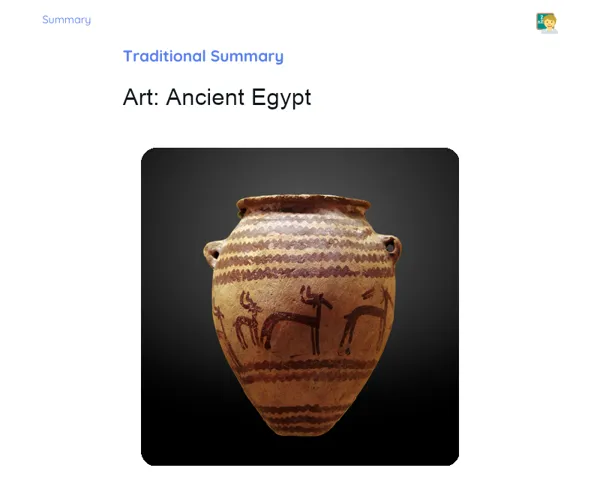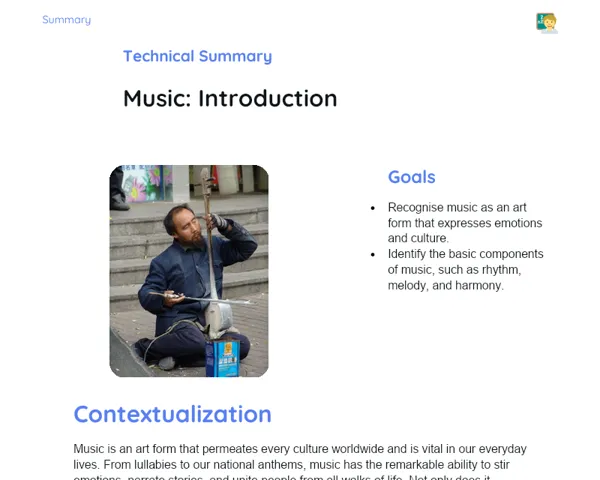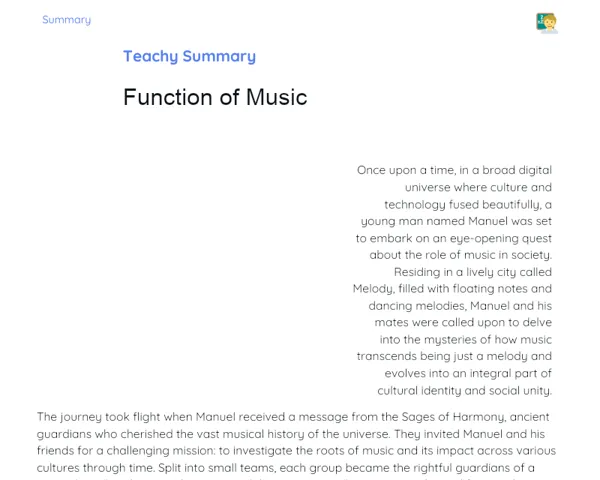Summary Tradisional | Art: Contemporary
Contextualization
Contemporary Art is an artistic movement that began in the latter half of the 20th century and is still evolving today. It’s marked by a rich variety of styles, techniques, and themes, often pushing the envelope on what we consider 'art' and 'beauty.' This movement isn't confined to a single style or approach, but rather is unified by its diversity and the goal of questioning and reflecting on the social, political, and cultural matters relevant to our time. Contemporary Art often speaks to the historical and social context surrounding its creation, frequently employing new media and technology to express ideas.
Moreover, Contemporary Art is known for encouraging public engagement. Artists like Yayoi Kusama create immersive installations where visitors can interact with the art firsthand. This dynamic changes the viewer's role from passive observer to active participant, transforming how we experience and appreciate art. Social media and digital platforms have also become key players in showcasing and selling artworks, making the art market more accessible and connecting artists to a wider audience.
To Remember!
Contemporary Artistic Movements
The contemporary artistic movements we see today are a reflection of the diverse social, political, and technological changes that have occurred since the latter half of the 20th century. Key movements include Abstract Expressionism, Pop Art, Conceptual Art, Minimal Art, and Neo-Expressionism, each standing out with its distinctive traits and themes.
For instance, Abstract Expressionism surfaced post-war and is known for its gestural and spontaneous painting techniques that emphasize emotional depth and subjectivity. Artists like Jackson Pollock and Mark Rothko are key figures here, creating large-scale, expressive works.
Pop Art, which hit its stride in the 1960s, pulls imagery and objects from everyday life and mass culture, critiquing consumer society in the process. Andy Warhol and Roy Lichtenstein are notable artists of this movement, famed for their silkscreens and paintings that echo celebrity and commercial images.
-
Abstract Expressionism: characterised by gestural and spontaneous painting techniques.
-
Pop Art: incorporates imagery from mass culture.
-
Conceptual Art: focuses on the ideas or concepts behind the work.
-
Minimal Art: highlights simplicity and geometric forms.
-
Neo-Expressionism: returns to figuration and emotional intensity.
Influence of Culture and Politics
Contemporary art is deeply influenced by the cultural and political landscapes in which it exists. Many artists engage with and critique the social and political conventions of their time, effectively acting as agents of change and reflection.
For instance, the Conceptual Art movement, which gained momentum during the 1960s and 1970s, frequently tackles political and social issues. Artists such as Joseph Kosuth and Yoko Ono challenge traditional art definitions and scrutinise established power dynamics through their work.
Additionally, contemporary art often responds to significant political happenings like wars, civil rights movements, and economic turmoil. Artists provide visual and emotional critiques of these realities, encouraging the audience to contemplate their own beliefs and positions.
-
Art as a reflection and critique of social and political norms.
-
Works that address political and social issues.
-
Engagement with significant political events.
-
Visual and emotional critique of contemporary realities.
New Media and Technologies
New media and technologies play a pivotal role in contemporary artistic production, broadening the scope for expression and interaction. Video, installation, performance, digital art, and other unconventional forms are widely embraced by contemporary artists.
A notable example is video art, which gained traction in the 1960s with pioneers like Nam June Paik. He utilized television and electronic media, creating works that investigate interactions and viewer perceptions.
Furthermore, digital art and the internet have provided new paths for creating and sharing artworks. Many contemporary artists leverage social media and digital platforms to exhibit and sell their work, engaging with a broader and more varied audience.
-
Use of video, installation, performance, and digital art.
-
Significance of video art and its pioneers like Nam June Paik.
-
Expansion in the creation and distribution of art through the internet.
-
Closer connection with a broader and more diverse audience.
Interactivity and Public Participation
Interactivity and public engagement are prominent features of contemporary art. Many artists design works that call for the active involvement of viewers, making them integral to the art itself.
Take Yayoi Kusama, for example, who is celebrated for her immersive installations that invite visitors to explore art in a hands-on way. Her 'infinity rooms' allow audiences to literally step into the art, creating a special and personal experience.
This approach not only reshapes the traditional passivity of the viewer but also redefines how we consume and appreciate art. Interactivity fosters deeper and more meaningful connections with the artwork, often enhancing our understanding and appreciation of contemporary creations.
-
Works requiring active participation from the viewer.
-
Immersive installations by artists like Yayoi Kusama.
-
Transformation in how art is enjoyed and valued.
-
Deeper and more meaningful connections with the artwork.
Key Terms
-
Contemporary Art: An ongoing artistic movement that began in the latter half of the 20th century, characterized by a variety of styles, techniques, and themes.
-
Abstract Expressionism: An artistic movement marked by gestural and spontaneous painting techniques, emphasizing emotional expression.
-
Pop Art: A movement that uses imagery and objects from daily life and mass culture to comment on and critique consumer society.
-
Conceptual Art: A movement that centres around the ideas or concepts behind the artwork, often addressing political and social issues.
-
Minimal Art: A movement that focuses on simplicity and geometric forms.
-
Neo-Expressionism: A movement that returns to figuration and emotional expression.
-
Video Art: An art form that incorporates video and electronic media to create interactive pieces.
-
Immersive Installation: A type of artwork that directly involves the viewer, creating a unique and personal experience.
Important Conclusions
Contemporary Art stands as a broad and varied movement that originated in the second half of the 20th century and continues to evolve. It features a multitude of styles, techniques, and themes that regularly confront traditional conceptions of art and beauty. The key movements discussed—including Abstract Expressionism, Pop Art, Conceptual Art, Minimal Art, and Neo-Expressionism—mirror the social, political, and technological shifts of their respective periods, utilising new media and technologies to express their ideas while engaging the public profoundly.
The impact of culture and politics on contemporary art is unmistakable, as many artists leverage their work to critique and reflect upon societal norms. This critical engagement is essential to understanding how art can serve as a catalyst for societal change. Movements like Conceptual Art serve as prime examples of this practice, questioning standard art definitions and challenging established power structures.
Interactivity and public participation are defining characteristics of contemporary art, fostering more profound connections between the artwork and the audience. The use of new media and technologies allows contemporary artists to create immersive experiences that transform how art is both seen and valued. Understanding this landscape is crucial, as contemporary art possesses the ability to encourage critical thinking and informs our aesthetic perceptions, ultimately reflecting and commenting on the pressing social, political, and cultural issues we face today.
Study Tips
-
Look over the works of artists mentioned in our discussions, such as Jackson Pollock, Andy Warhol, and Yayoi Kusama, to see how each artistic movement plays out in practice.
-
Explore contemporary artists’ digital platforms and social media pages to discover how new technologies are leveraged in art creation and distribution.
-
Whenever you can, attend exhibitions and experience interactive installations to deeply engage with contemporary art and enhance your understanding of the pieces.



